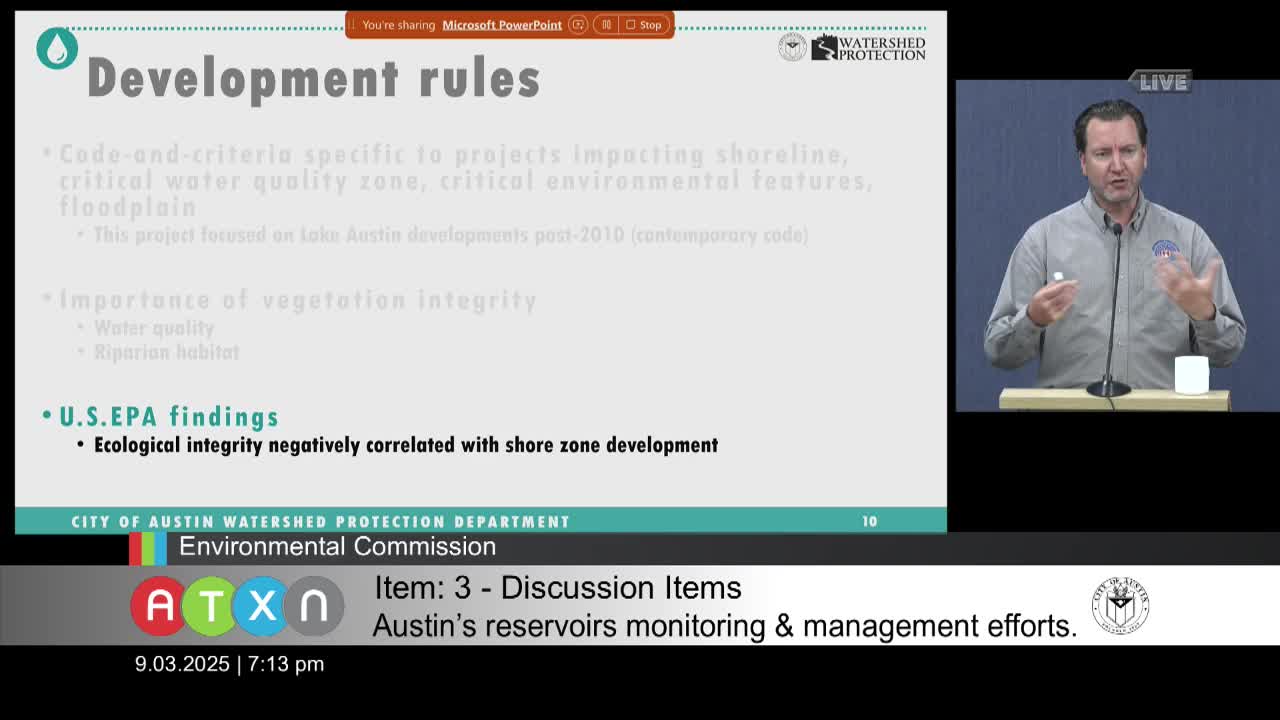Environmental Review Reveals Plant Survivorship Challenges at Lake Austin Site Plans
September 03, 2025 | Austin, Travis County, Texas
Thanks to Scribe from Workplace AI , all articles about Texas are free for you to enjoy throughout 2025!

This article was created by AI using a video recording of the meeting. It summarizes the key points discussed, but for full details and context, please refer to the video of the full meeting. Link to Full Meeting
The discussion began with an overview of the negative effects of vegetation clearing on water quality, especially in areas with septic systems. It was noted that increased development has led to detrimental impacts on local fisheries and overall ecosystem health. The commission emphasized the need for compliance with coding criteria that dictate the required diversity and quantity of plant species in development projects.
A significant portion of the meeting was dedicated to reviewing a study that assessed the success of various site plans implemented between 2010 and 2020. Out of 115 site plans analyzed, 84 had been closed, and the commission evaluated the persistence of the proposed plant species and their overall health. The findings were scored on a scale from 1 to 6, with 6 representing exceptional outcomes.
One standout project discussed was a demonstration at Emmalong Park, which showcased successful implementation of terracing and living shorelines. This project not only met but exceeded expectations, with a thriving ecosystem that demonstrated effective management practices. In contrast, other sites received lower scores due to inadequate adherence to site plans, with one site completely sodded over, failing to preserve native wetland plants.
The commission presented graphs illustrating the disparity between the number of required plants and those that remained post-implementation. Most sites fell below the desired threshold, indicating a need for improved monitoring and enforcement of environmental standards. The discussion underscored the challenges faced by environmental reviewers and inspectors, who are often overwhelmed by ongoing projects.
Looking ahead, the commission expressed interest in expanding this assessment to include wetland preservation across the city, aiming to evaluate the effectiveness of mitigation plantings in various locations. The meeting concluded with a call for further research into plant grouping strategies to enhance survivorship rates, suggesting that closer planting may yield better outcomes than traditional spacing methods.
Overall, the meeting underscored the critical need for ongoing evaluation of environmental practices in Austin, highlighting both successes and areas for improvement in protecting the region's natural resources.
Converted from Austin - Environmental Commission meeting on September 03, 2025
Link to Full Meeting
Comments
View full meeting
This article is based on a recent meeting—watch the full video and explore the complete transcript for deeper insights into the discussion.
View full meeting
